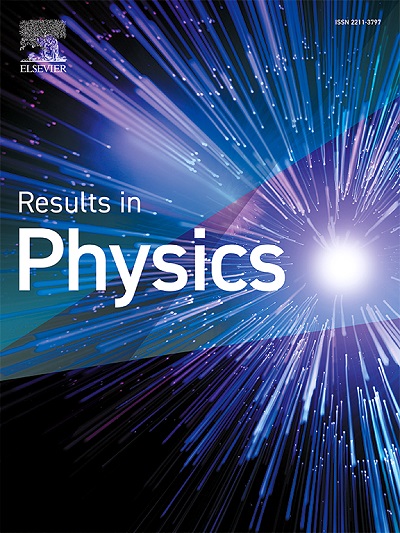氢化联苯负泊松比的大尺度分子动力学模拟
IF 4.4
2区 物理与天体物理
Q2 MATERIALS SCIENCE, MULTIDISCIPLINARY
引用次数: 0
摘要
本研究旨在探讨氢化对联苯泊松比的影响。通过将大规模分子动力学模拟与随机结构生成方法相结合,本研究发现,随着氢化程度的调整,联苯的泊松比会从正值变为负值。具体来说,在较低的氢化程度下,泊松比会随着氢化程度的增加而降低,最终在氢化程度为 40% 至 50% 时呈现负泊松比。然而,随着氢化程度的进一步提高,负泊松比效应会减弱。氢化联苯出现负泊松比的原因是氢化引起了明显的波纹效应。在拉伸应变下,波纹的抑制减少了垂直于拉伸方向的收缩。此外,研究结果还强调了结构中的波纹效应与氢化百分比之间的密切联系。这些结果表明,氢化是调节联苯泊松比的有效方法,可使其从正值转变为负值。本文章由计算机程序翻译,如有差异,请以英文原文为准。
Large-scale molecular dynamics simulations of negative Poisson’s ratio in hydrogenated biphenylene
This study was conducted to investigate the effect of hydrogenation on the Poisson’s ratio of biphenylene. By combining large-scale molecular dynamics simulations with a stochastic structure generation method, this study revealed that the Poisson’s ratio of biphenylene can shift from positive to negative as the degree of hydrogenation is adjusted. Specifically, at lower hydrogenation levels, the Poisson’s ratio decreases with increasing hydrogenation, eventually exhibiting a negative Poisson’s ratio at 40% to 50% hydrogenation. However, as hydrogenation progresses further, the negative Poisson’s ratio effect diminishes. The occurrence of negative Poisson’s ratio in hydrogenated biphenylene is attributed to a pronounced ripple effect induced by hydrogenation. Under tensile strain, the suppression of ripples reduces contraction in the direction perpendicular to the applied stretch. Moreover, the findings highlight a strong correlation between the ripple effects in the structure and the percentage of hydrogenation. These results demonstrate that hydrogenation serves as an effective approach to modulate the Poisson’s ratio of biphenylene, enabling its transition from positive to negative.
求助全文
通过发布文献求助,成功后即可免费获取论文全文。
去求助
来源期刊

Results in Physics
MATERIALS SCIENCE, MULTIDISCIPLINARYPHYSIC-PHYSICS, MULTIDISCIPLINARY
CiteScore
8.70
自引率
9.40%
发文量
754
审稿时长
50 days
期刊介绍:
Results in Physics is an open access journal offering authors the opportunity to publish in all fundamental and interdisciplinary areas of physics, materials science, and applied physics. Papers of a theoretical, computational, and experimental nature are all welcome. Results in Physics accepts papers that are scientifically sound, technically correct and provide valuable new knowledge to the physics community. Topics such as three-dimensional flow and magnetohydrodynamics are not within the scope of Results in Physics.
Results in Physics welcomes three types of papers:
1. Full research papers
2. Microarticles: very short papers, no longer than two pages. They may consist of a single, but well-described piece of information, such as:
- Data and/or a plot plus a description
- Description of a new method or instrumentation
- Negative results
- Concept or design study
3. Letters to the Editor: Letters discussing a recent article published in Results in Physics are welcome. These are objective, constructive, or educational critiques of papers published in Results in Physics. Accepted letters will be sent to the author of the original paper for a response. Each letter and response is published together. Letters should be received within 8 weeks of the article''s publication. They should not exceed 750 words of text and 10 references.
 求助内容:
求助内容: 应助结果提醒方式:
应助结果提醒方式:


